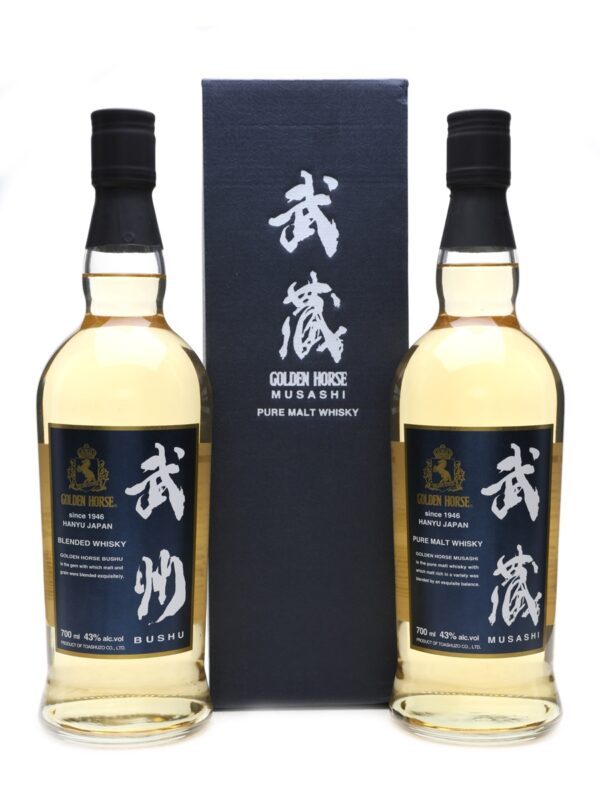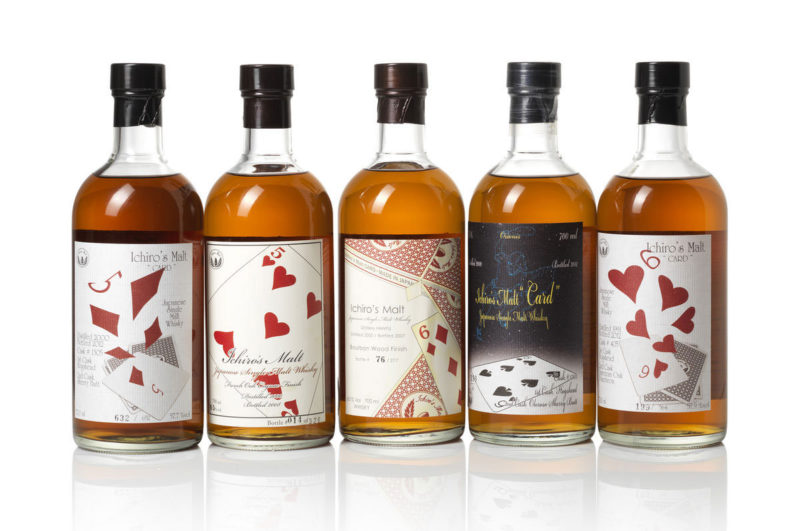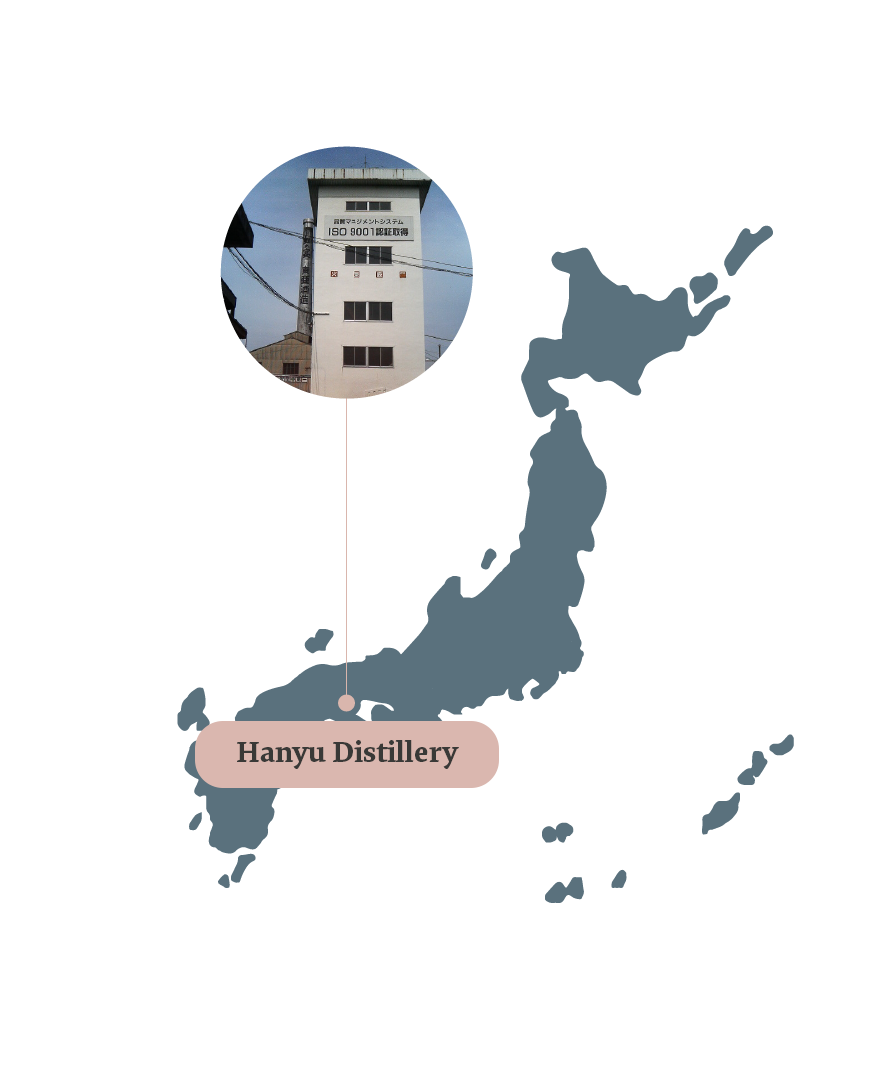Since the recent announcement from Japanese whisky and sake producer, Toa Shuzo, that they will be reopening the legendary Hanyu distillery in 2021, I have been asked by a number of friends and industry colleagues about what this means for the industry; will the new whisky be the same, and how will it affect prices of old and rare bottles on the secondary market? Today I’ll attempt to answer those questions as best I can.
A Little Bit of Hanyu History

Built by the Akuto family’s Toa Shuzo in 1941, Hanyu initially produced sake and shochu for the local market. In 1946 that they were granted a license to distil whisky and they began by using a continuous steel still to create grain whisky. Their first release was the now famous “Golden Horse” expression, which was a blend of Scotch malt whisky and homemade grain.
At the time, Scotland’s Distillers Company Limited (DCL) owned six lowland grain distilleries and the brand White Horse Blend and as such they sought legal action against Hanyu. They claimed that Golden Horse blend was piggybacking on their already established brand. Despite feeling like they had a strong case, they lost the battle in court and Toa Shuzo were able to continue producing Golden Horse.
It wasn’t until the 1980s that the Hanyu distillery made their first attempt at producing single malt akin to that being made, and becoming increasingly popular, in Scotland. In order to carry out the distillation they acquired two steam-heated pot stills.
Over the next 20 years, the distillery would produce what is now known to be some of the best single malt in existence. However, at the time, there was simply no desire for their product on the local market and Japanese whisky was yet to reach the international stage. Shochu and sake dominated local spirits sales and soon, the lack of custom meant that the business was too financially costly to maintain.
In 2004, Toa Shuzo was purchased by a Kyoto based Shochu producer who had absolutely no interest in continuing with whisky production, or even bottling the remaining 400 or so casks. In fact, their initial plan was to repurpose much of the ageing spirit, turning it into shochu.
Thankfully, Ichiro Akuto, grandson of the distillery’s founder, was not ready to see over 20 years worth of his family’s hard work go to waste and so, with financial backing from Sasanokawa Shuzo, he purchased all of the remaining casks. These casks would go on to become some of the rarest and most sought after Japanese whisky releases of all time, including the record-breaking Card Series that we hear so much about today.
What of Toa Shuzo?
After selling off the remaining stock and distilling equipment to Ichiro and his backers, Toa Shuzo dismantled the Hanyu distillery. Their interest lay not in whisky, but rather in Shochu and sake production. Having said that, they did later decide to keep the Golden Horse blend alive and continued to import Scotch malt whisky in order to do so, however this was their only vested interest in the Japanese whisky market at the time.
Today, that has all changed and with Japanese whisky now firmly on the international map, Toa Shuzo have decided that now is the right time to reopen the long-lost distillery. But what have they been up to since 2004?
In a recent press release, they stated: “In 2004, we joined Hinode Holdings Co., Ltd. to revitalize our business and have been working on reconstruction. Around this time, we decided to give up the original malt whiskey that we had at that time, although it was a tough decision to focus on business revitalization, and decided to hand it over to the original owner.
As a result of striving for business revitalization, we have won the gold medal at the National New Sake Appraisal in our main business of sake production. By refining our technical capabilities, we have regained the trust of our customers, and we have managed to stabilize our management base and see results for business revitalization, so we have decided to construct a distillery”.
Despite their successes in revitalizing their business and being awarded for their sake production, the question remains whether they have enough whisky-making experience to produce a spirit that can stand up to the old & rare bottles that we see selling for hundreds of thousands of dollars at auction today.
Will The Spirit Be The Same?
One thing that Toa Shuzo are doing in a bid to recreate that legendary Hanyu whisky, is having brand new stills made to the exact specifications of the old ones. They say that they have blueprints for this and that the stills will be ready to fire-up come February 2021.
Having exact copies of the previous stills will no doubt go some way in helping to produce spirit similar to that created there throughout the 80s and 90s, however it’s not as simple as “start the stills and off we go”. A serious amount of knowledge and expertise of distilling, maturing and wood management are also needed in order to create truly outstanding whisky.
The Akuto family had that in abundance and were therefore able to make delicious, deep and complex liquid. Whether Toa Shuzo possesses enough to do the same, we will just have to wait and see. It’s certainly not impossible, but it would be a remarkable feat if achieved.
Where Will New Hanyu Fit Into The Current Market?

If you’re expecting the reopening of the Hanyu distillery to bring more auction record-breakers like the Card Series bottlings or similar, think again. These old & rare masterpieces sell for huge sums at auctions around the world for a number of key reasons, mainly: their quality, their provenance and their almost unparalleled rarity. These three things combine to create an investable, collectible product that is in high demand, with no active supply, which in turn forces prices even higher. The whisky produced at the new Hanyu distillery can only possibly meet two of these requirements, the quality and the rarity, with the latter only lasting for the first few years, until large quantities of stock are fully matured and released. Even then, it’s a different kind of rarity, where stock is only limited because the distillery is waiting for their new-make to mature, and therefore releases are few and far between.
These early releases will also contain much younger liquid, and all eyes, noses and palates will be on them, judging and comparing each release to the Hanyu of old.
All in all, it’s safe to assume that new Hanyu will be available at a much lower price point than the iconic bottles we see at auction houses today. In fact, they should probably be more in line with expressions from some of Japan’s brilliant new distilleries, such as Akkeshi and Nagahama, but it’s also very possible that just having the name “Hanyu” on the label, allows Toa Shuzo to sell slightly higher than we’d perhaps like to see.
As for Hanyu of old, I would expect that the reconstruction of the distillery will have no real bearing on the prices of these bottles on the secondary market. These will always be a major part of the Akuto family legacy, they will always be super-rare, they will always be a piece of Japanese whisky history, and they will never be reproduced, so we can only expect to see more auction records broken as the old stock continues to become rarer by the day.
Exciting Times For Japanese Whisky
Whether you’re excited about the reopening, or skeptical about it, one thing is for sure, this is a good thing for the Japanese whisky industry.
Ichiro Akuto has worked incredibly hard to build the Hanyu name over the years, as he released the 400 remaining casks that he had purchased upon the distillery’s closure. The name is now recognised around the world and when Hanyu reopens, whisky enthusiasts everywhere will be watching.
Apart from giving Toa Shuzo a leg-up when it comes to relaunching the distillery, it also puts a lot of attention on the Japanese whisky industry as a whole, creating opportunities for exciting new distilleries to showcase their skills, knowledge and excellent products on the world stage.
All we have to do now is sit and wait. Hopefully, when the whisky finally comes, it will be priced in line with its age and quality, as opposed to the name on the bottle.
Published: December 18, 2020Author: Liam Hiller
